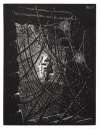Max
Beckmann
Max Beckmann, a prominent German painter and printmaker, is widely recognised for his Expressionist style, capturing the turmoil and intensity of the early 20th century. If you’re looking for original Max Beckmann prints and editions for sale or would like to sell, request a complimentary valuation and browse our network’s most in-demand works.
Max Beckmann art for sale
Discover Max Beckmann prints for sale, exclusively available through our private network of collectors. Explore signed and unsigned screenprints, lithographs, digital prints, and rare editioned proof prints by era-defining blue chip artists.
Sell Your Art
with Us
with Us
Join Our Network of Collectors. Buy, Sell and Track Demand
Biography
Born in Leipzig, Germany, in 1884, Beckmann displayed an early passion for art, which led him to study at the Weimar Academy of Fine Arts. His formative years coincided with a period of great artistic innovation, and his education provided him with a strong foundation in traditional techniques. However, the advent of World War I, in which he served as a medic, affected Beckmann, causing him to abandon his earlier academic style in favour of a more emotionally charged and expressive approach to painting.
The war's traumatic impact spurred a significant transformation in Beckmann's approach. In the 1920s, his work entered a new phase marked by a heightened sense of reality and a stark, often grotesque portrayal of the world around him. This period saw the creation of some of his most significant works, such as The Night, which explored human suffering and the horrors of war.
In the 1920s, Beckmann’s reputation grew, and he became a prominent figure in the New Objectivity movement, known for its realistic yet critical depictions of society. His paintings often featured theatrical settings, combining figures and symbols that reflected the complexities of modern life.
In the 1930s, as the political climate in Germany became increasingly hostile to modern art, Beckmann’s work was labelled “degenerate” by the Nazi regime. He fled to Amsterdam and later settled in the United States, where he continued to paint and teach. Despite the challenges he faced throughout his life, Beckmann's work remained influential and powerful, embodying the spirit of resistance and innovation.
Throughout his career, Beckmann was influenced by various artistic movements, including Cubism and Fauvism, yet he forged his style characterised by bold colours, angular forms, and a sense of dramatic tension. His paintings often featured allegorical and mythological themes, reflecting his search for meaning in a post-war society fraught with uncertainty.





























